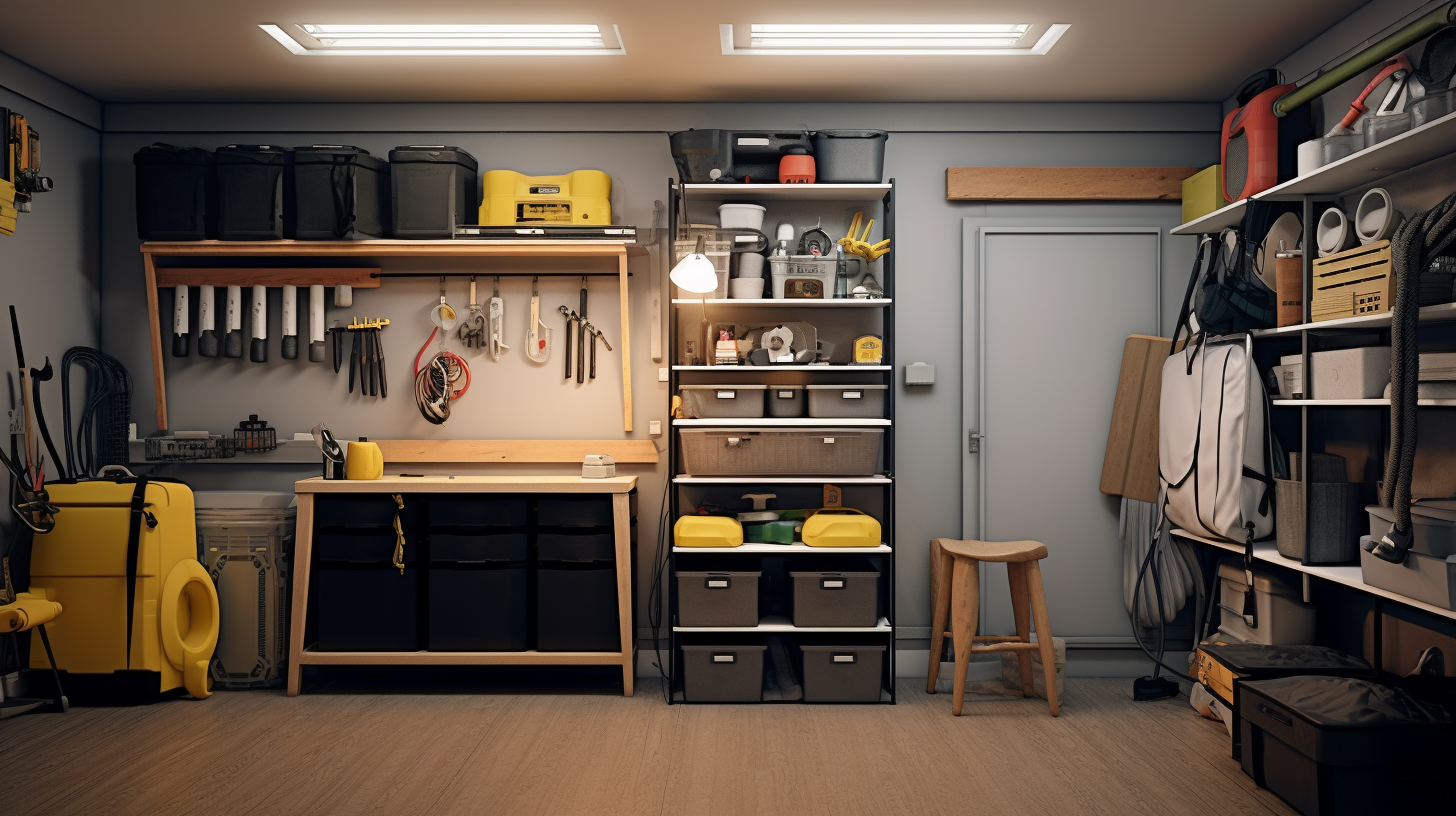We've got you covered with the 10 best safety tips for DIY water heater fixes.
We'll show you how to protect yourself, turn off power and water, and use the right tools.
We'll also teach you how to inspect for leaks and gas odor, ventilate the area, and be cautious when draining.
Plus, we'll give you essential tips for dealing with gas water heaters and avoiding overheating and pressure build-up.
Let's get started on your water heater fix!
Wear Protective Gear
We should always wear the appropriate protective gear when attempting DIY water heater fixes to ensure our safety. Safety should always be our top priority when working with potentially dangerous equipment like water heaters.
Wearing protective gear such as gloves, safety goggles, and a dust mask can help prevent injuries and keep us safe. Gloves protect our hands from burns and cuts, while safety goggles shield our eyes from harmful chemicals and debris. Additionally, wearing a dust mask can protect us from inhaling harmful fumes or particles.
These simple precautions may seem like common sense, but they're often overlooked. By taking the time to put on the necessary protective gear, we can greatly reduce the risk of accidents and injuries while working on our water heaters.
Turn Off Power and Shut Off Water
To ensure our safety during DIY water heater fixes, it's crucial to turn off the power and shut off the water.
Before attempting any repairs or maintenance on your water heater, make sure to locate the power source and turn it off. This will prevent any electrical shocks or accidents while working on the unit.
Additionally, shutting off the water supply to the heater is equally important. This will prevent any leaks or flooding during the repair process. Locate the water shut-off valve, usually located near the top of the water heater or on the main water line, and turn it off.
Use Proper Tools
When working on DIY water heater fixes, it's essential to utilize the appropriate tools for the job. Using the proper tools not only makes the job easier but also ensures safety.
One of the most important tools to have is a wrench. A wrench allows you to tighten or loosen connections with ease and precision.
A multimeter is another crucial tool that can help you diagnose electrical issues and test for voltage.
Additionally, having a pipe cutter and a pipe wrench is essential for plumbing repairs. These tools will enable you to cut and remove old pipes and install new ones.
Lastly, don't forget to have a sturdy ladder or step stool to safely reach the water heater.
Inspect for Leaks and Gas Odor
To ensure safety during DIY water heater fixes, it's imperative for us to thoroughly inspect for leaks and gas odor. Leaks can lead to water damage and potential gas leaks can cause fires or explosions.
Start by visually examining the water heater and its surroundings for any signs of water leakage, such as puddles or dampness.
Next, use your nose to detect any unusual gas odors, which may indicate a gas leak. If you smell gas, it's crucial to turn off the gas supply immediately and call a professional for assistance.
Additionally, check the gas connections for any visible leaks.
Ventilate the Area
After thoroughly inspecting for leaks and gas odor, it's important for us to properly ventilate the area when working on DIY water heater fixes.
Adequate ventilation is crucial to ensure the safety of both ourselves and our surroundings. When dealing with a gas-powered water heater, it's essential to allow any potentially harmful gases, such as carbon monoxide, to dissipate quickly.
This can be achieved by opening windows and doors to create a cross breeze, or by using fans to circulate the air. Additionally, it's advisable to avoid working in confined spaces, as this can increase the risk of gas buildup.
Follow Manufacturer's Instructions
To ensure a safe and successful DIY water heater fix, we must carefully follow the manufacturer's instructions. These instructions are provided by the experts who designed and built the water heater, so they're crucial for understanding how to handle the repairs correctly. Ignoring or neglecting the manufacturer's instructions can lead to serious safety hazards and may even void the warranty.
Start by reading the instruction manual thoroughly before attempting any repairs. Pay close attention to the recommended tools, materials, and techniques specified by the manufacturer. Following these instructions will ensure that you're using the right methods and equipment for the job.
Additionally, the manufacturer's instructions may include important safety precautions that must be followed to prevent accidents and injuries. Remember, taking shortcuts or improvising can have disastrous consequences, so it's essential to adhere to the manufacturer's instructions diligently.
Use Caution When Draining
When draining the water heater, we must exercise caution to ensure a safe and smooth process. Draining the water heater is an important step in maintenance or repair tasks, but it can pose risks if not done properly.
Before starting, it's crucial to turn off the power supply to the heater. This will prevent any accidents or electrical shocks.
Next, attach a hose to the drain valve and place the other end in a safe location where the hot water can flow without causing any damage. Slowly open the drain valve and allow the water to flow out. It's important to be cautious of the hot water and avoid any contact with it.
Once the water has completely drained, close the drain valve and follow the manufacturer's instructions to refill and restart the water heater.
Take Precautions With Gas Water Heaters
To ensure safety when dealing with gas water heaters, we must take necessary precautions.
Gas water heaters can be potentially dangerous if not handled correctly, as they involve the use of combustible fuel.
First and foremost, it's important to turn off the gas supply before attempting any repairs or maintenance. This can be done by locating the gas shut-off valve and turning it to the off position.
Additionally, it's crucial to ensure proper ventilation in the area where the gas water heater is located. Adequate airflow is essential to prevent the buildup of harmful gases, such as carbon monoxide.
Finally, when working on a gas water heater, it's recommended to wear protective gear, such as gloves and safety goggles, to prevent any accidents or injuries.
Avoid Overheating and Pressure Build-Up
By regularly monitoring the temperature and pressure levels, we can prevent overheating and pressure build-up in our water heater. Overheating can lead to dangerous situations, such as scalding hot water or even tank explosions. To avoid this, it's important to keep an eye on the temperature setting on the thermostat.
The recommended temperature is typically 120 degrees Fahrenheit to prevent burns and conserve energy. Additionally, checking the pressure relief valve is crucial. This valve is designed to release excess pressure when it reaches dangerous levels. Make sure it's functioning properly by testing it regularly.
If there are signs of overheating or pressure build-up, it's essential to seek professional help to address the issue promptly and prevent any potential hazards.
Seek Professional Help if Needed
If we encounter any issues beyond our expertise, it's important to consult a professional for assistance with fixing our water heater. While it may be tempting to try and tackle any problem on our own, certain issues can be complex and potentially dangerous if not handled properly.
A professional plumber or technician has the knowledge, skills, and experience to diagnose and fix any problem with our water heater safely and efficiently. They're trained to handle various types of water heater systems and can provide expert advice on the best course of action.
Frequently Asked Questions
How Do I Choose the Right Size Water Heater for My Home?
When choosing the right size water heater for our home, we need to consider a few factors.
First, we should determine the hot water demand based on the number of people living in the house and their daily usage.
Next, we need to calculate the appropriate tank size by considering the recovery rate and the temperature rise needed.
It's also important to ensure that the water heater meets the efficiency standards and is properly installed to ensure safety.
Can I Install a Water Heater Myself, or Is It Better to Hire a Professional?
We can definitely install a water heater ourselves, but it's important to consider the risks involved. Hiring a professional is generally a safer option, as they've the expertise and knowledge to handle the installation properly.
However, if you're confident in your DIY skills and follow all safety precautions, you can attempt it yourself. Just make sure to research the process thoroughly and consult with professionals if needed.
Safety should always be the top priority.
How Often Should I Flush and Clean My Water Heater?
How often should we flush and clean our water heater?
It's important to regularly maintain your water heater to ensure it operates efficiently and prolong its lifespan. Flushing and cleaning your water heater annually is typically recommended, but this can vary depending on factors such as water quality and usage.
Regular maintenance helps remove sediment buildup, which can improve energy efficiency and prevent potential issues.
Remember to follow proper safety precautions when performing any DIY maintenance on your water heater.
Are There Any Specific Safety Precautions I Should Take When Using an Electric Water Heater?
When using an electric water heater, there are some important safety precautions to keep in mind.
First, always turn off the power before performing any maintenance or repairs. This will help prevent electrical shock.
Additionally, be sure to drain the tank completely before attempting any work to avoid scalding or burns.
It's also a good idea to wear protective gloves and eyewear while working on the heater.
Following these precautions will help ensure your safety when dealing with an electric water heater.
What Are Some Common Signs That My Water Heater Is in Need of Repair or Replacement?
Some common signs that our water heater is in need of repair or replacement include:
- A lack of hot water
- Strange noises coming from the tank
- Leaks or water pooling around the unit
- A significant increase in energy bills
It's important to address these issues promptly to avoid further damage or potential safety hazards.
Regular maintenance and inspections can also help identify any potential problems early on, ensuring the longevity and efficiency of our water heater.
Conclusion
In conclusion, following these 10 safety tips is crucial when attempting DIY water heater fixes.
- Wearing protective gear
- Turning off power and water
- Using proper tools
- Inspecting for leaks and gas odor
- Ventilating the area
- Taking precautions with gas water heaters
These are all important steps to ensure safety.
Additionally, avoiding overheating and pressure build-up, using caution when draining, and seeking professional help if needed will help prevent accidents and ensure a successful repair.
Stay safe and happy fixing!



